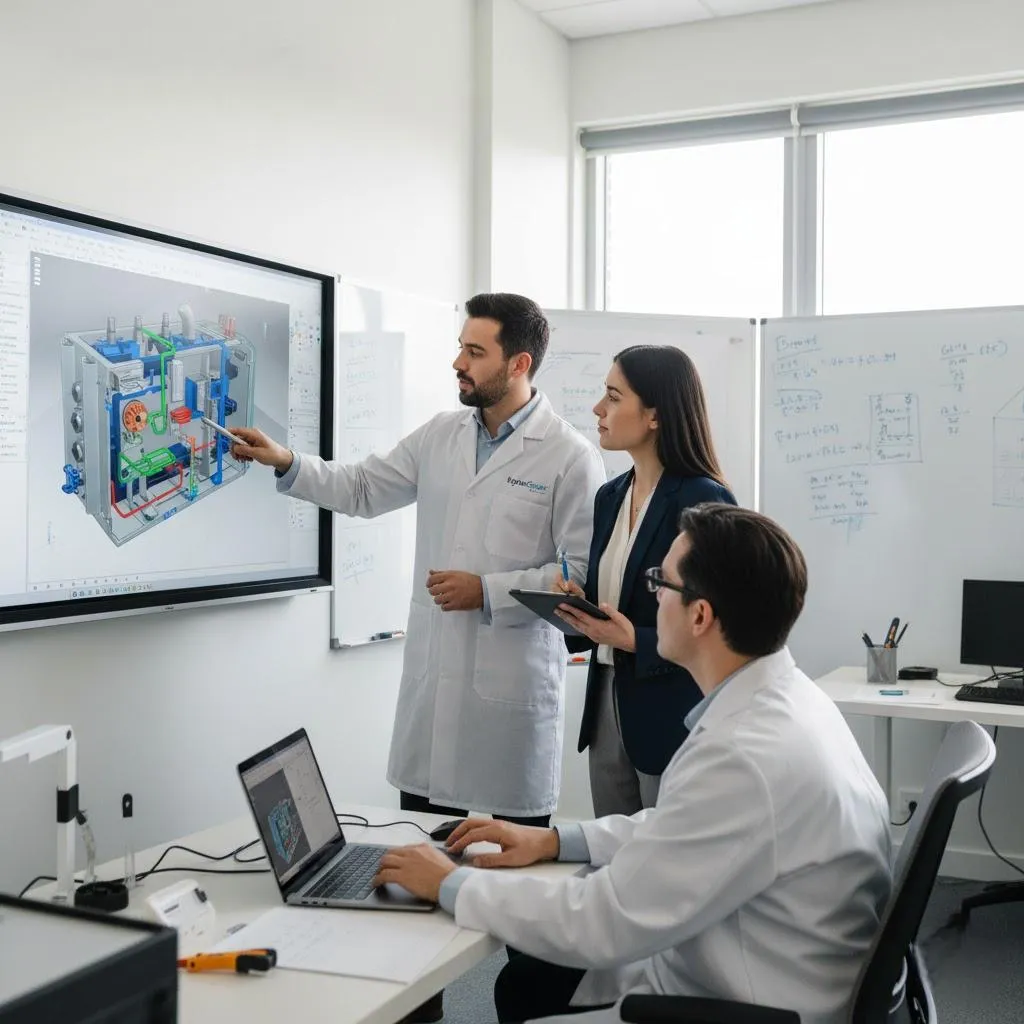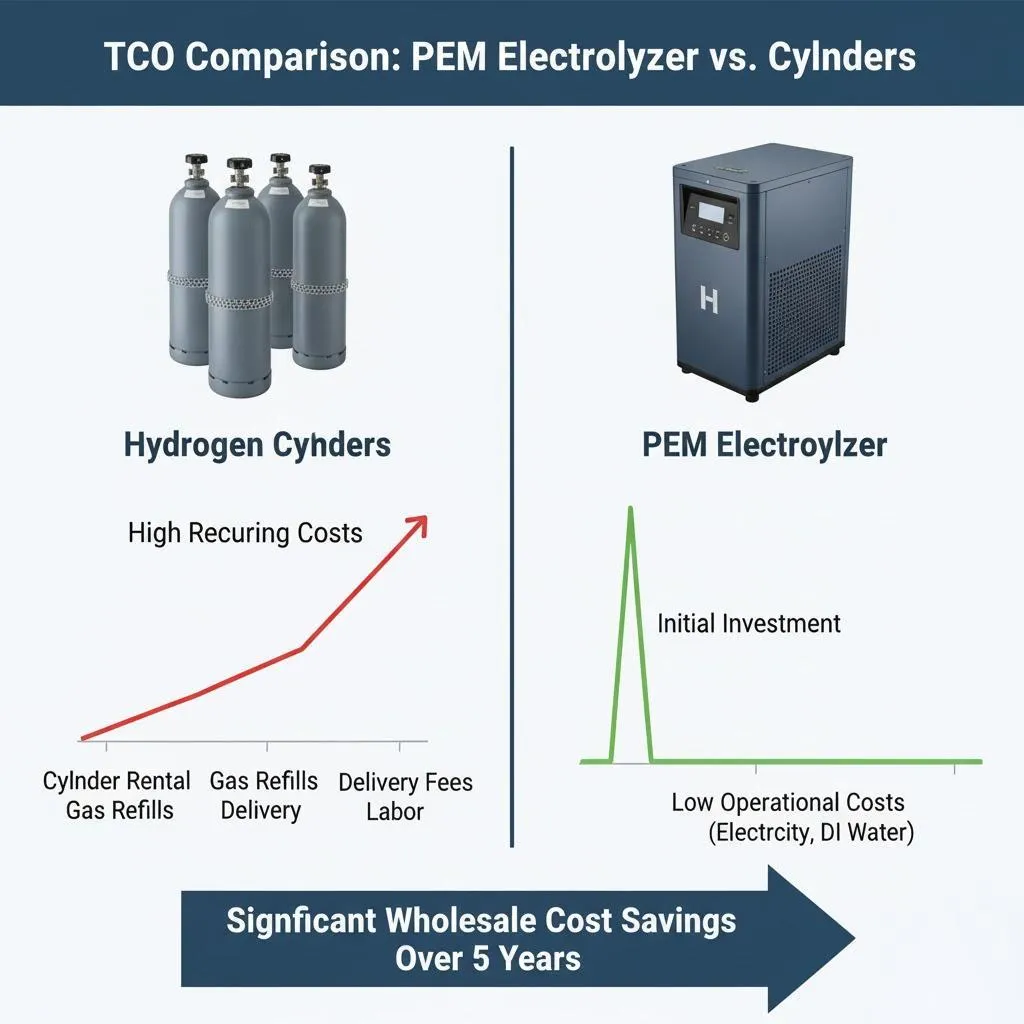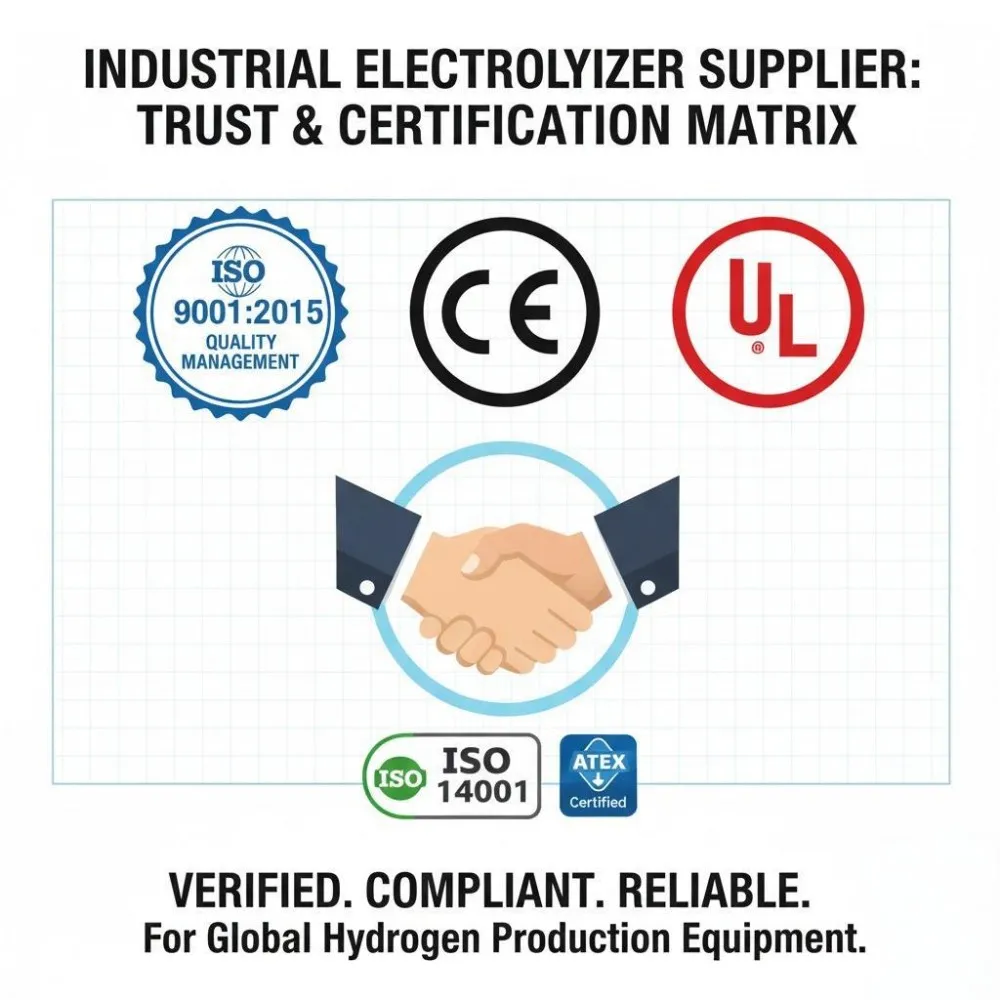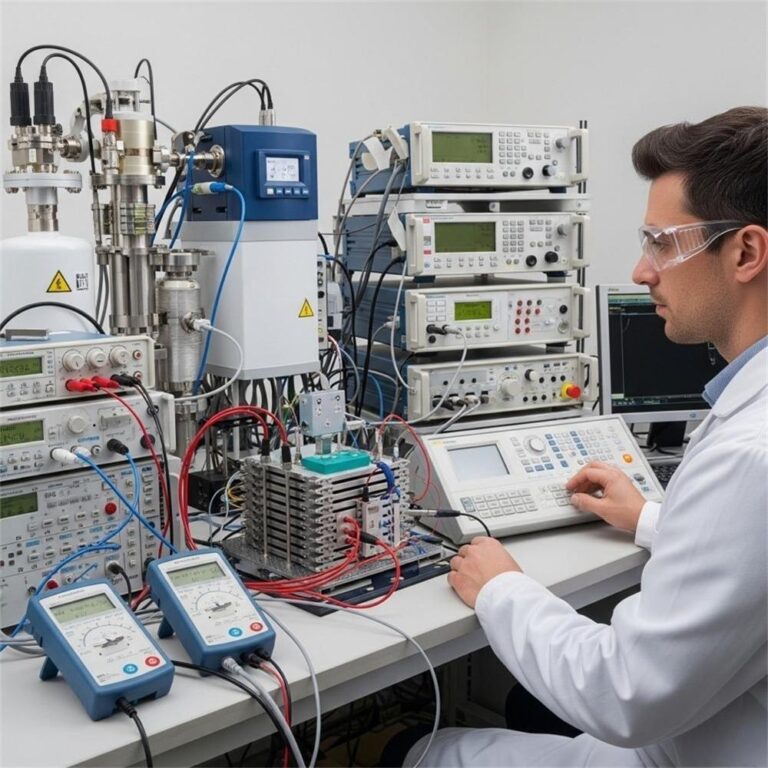Hydrogen is emerging as a cornerstone of the clean energy transition, powering everything from industrial furnaces to zero-emission vehicles. As industries and energy providers look for ways to decarbonize, on-site hydrogen production has become a strategic solution — especially for facilities with continuous or high-volume needs.
Choosing the Right 30Nm3/H Water Hydrogen Generator for Your Needs
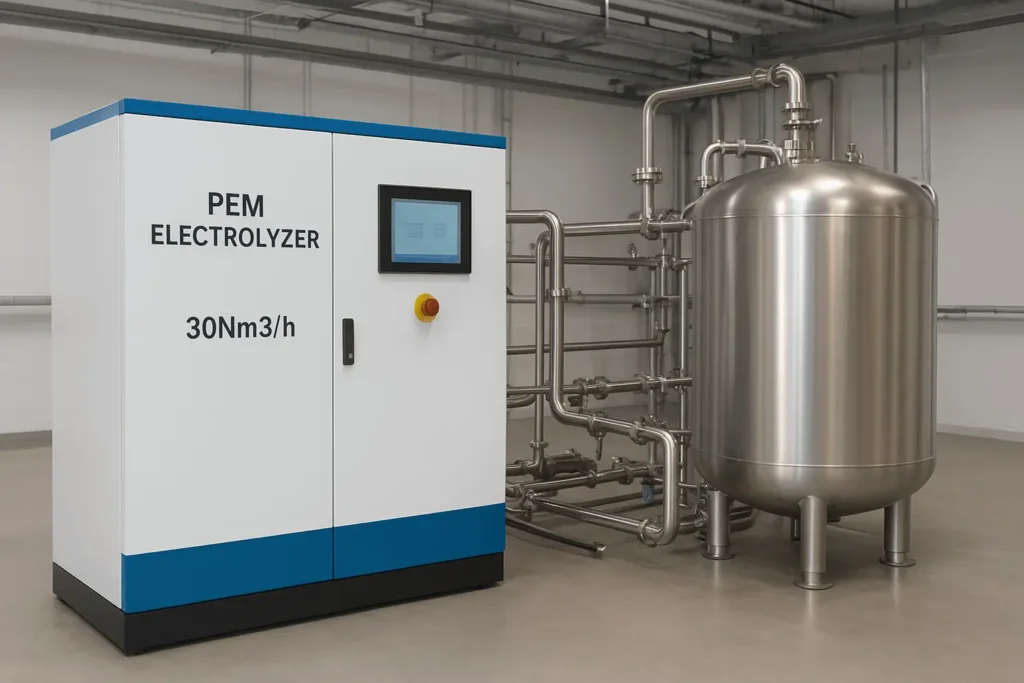
One of the most efficient ways to achieve this is with a 30Nm3/H water hydrogen generator, powered by PEM (Proton Exchange Membrane) electrolysis. This capacity strikes a balance between industrial-scale output and operational flexibility, making it a go-to option for manufacturing, research, and energy storage applications.
In this guide, we’ll walk you through the applications that demand a 30Nm3/H system, explain PEM electrolyzer technology, outline the most important selection criteria, and share best practices for installation and maintenance.
By the end, you’ll have the knowledge you need to choose the best hydrogen generator for sale that fits your operational requirements.
Applications Requiring 30Nm3/H Capacity
A hydrogen generator rated for 30Nm3/H produces approximately 2,700 cubic meters per day — enough to serve mid-scale industrial processes, large research labs, or hydrogen refueling stations. Let’s break down the main sectors where this capacity is critical.
Industrial Applications
Ammonia Production
Hydrogen is a core feedstock in ammonia synthesis via the Haber-Bosch process. A steady 30Nm3/H flow ensures consistent ammonia output, essential for fertilizer manufacturing. Since ammonia production runs continuously, reliability is paramount.
Methanol Production
Methanol plants require hydrogen for synthesis gas (syngas) blending. A 30Nm3/H generator can support small-to-medium methanol production facilities, reducing dependence on external hydrogen deliveries.
Steel Manufacturing
In green steelmaking, hydrogen is replacing coal as a reducing agent for iron ore. This shift cuts CO₂ emissions dramatically. At 30Nm3/H, a PEM electrolyzer can serve a pilot steel plant or supplement larger operations.
Electronics Industry
Semiconductor fabrication and specialty electronics manufacturing demand ultra-high purity hydrogen for creating controlled atmospheres. The purity from PEM electrolyzers — often 99.999% — meets these stringent needs.
Energy Applications
Power-to-Gas
By converting surplus renewable electricity into hydrogen, power-to-gas projects stabilize the grid. A 30Nm3/H unit can feed hydrogen directly into natural gas pipelines or store it for later use.
Hydrogen Refueling Stations
Fuel cell vehicle stations require a continuous supply of high-pressure hydrogen. A 30Nm3/H generator can serve as the backbone for small-to-medium public or private refueling points.
Fuel Cell Applications
Stationary and mobile fuel cell systems — from backup generators to marine propulsion — can be supported by this output level, ensuring a steady supply without dependence on trucked-in hydrogen.
Research and Development
Laboratories
High-volume hydrogen consumption is common in chemical R&D, materials science, and energy testing labs. A PEM electrolyzer ensures a safe, on-demand supply without large storage tanks.
Pilot Plants
Developers of hydrogen-based technologies use pilot plants to bridge the gap between lab-scale and commercial-scale production. A 30Nm3/H generator is often the perfect intermediate step.
Why Capacity Matters: A hydrogen generator that’s too small will create production bottlenecks, while one that’s oversized leads to wasted capital and energy. The 30Nm3/H specification is a sweet spot for many emerging hydrogen applications — scalable, efficient, and financially viable.
Water PEM Electrolyzer Systems Explained
PEM electrolyzers have become the preferred choice for many hydrogen projects, thanks to their high efficiency, rapid response, and ultra-pure output.
What is PEM Electrolysis?
PEM electrolysis splits water into hydrogen and oxygen using electricity and a solid polymer electrolyte membrane.
Unlike alkaline electrolyzers, PEM units operate at higher current densities and deliver faster start-up times, making them ideal for intermittent renewable energy sources.
Advantages include:
- High Purity: 99.999% hydrogen without additional purification.
- Compact Design: Smaller footprint than alkaline systems.
- Dynamic Operation: Responds quickly to load changes.
- Low Maintenance: Fewer moving parts reduce wear.
Components of a PEM Electrolyzer System
- Electrolyzer Stack – The heart of the system where water molecules split into hydrogen and oxygen.
- Power Supply – Converts AC electricity to the DC voltage needed for electrolysis.
- Water Purification System – Ensures deionized water input to prevent membrane fouling.
- Gas Separation and Drying – Removes residual moisture and separates hydrogen from oxygen safely.
- Control System – Automates operation, monitors performance, and ensures safety compliance.
How a PEM Electrolyzer Works (Step-by-Step)
- Water Entry: Purified water enters the anode side.
- Electrochemical Reaction: At the anode, water molecules split into protons, electrons, and oxygen gas.
- Proton Migration: Protons pass through the membrane to the cathode.
- Hydrogen Formation: Protons combine with electrons to form hydrogen gas.
- Gas Handling: Hydrogen is collected, dried, and sent to storage or use.
Perfect — let’s continue right into the Key Selection Criteria section so your article stays complete and SEO-rich.
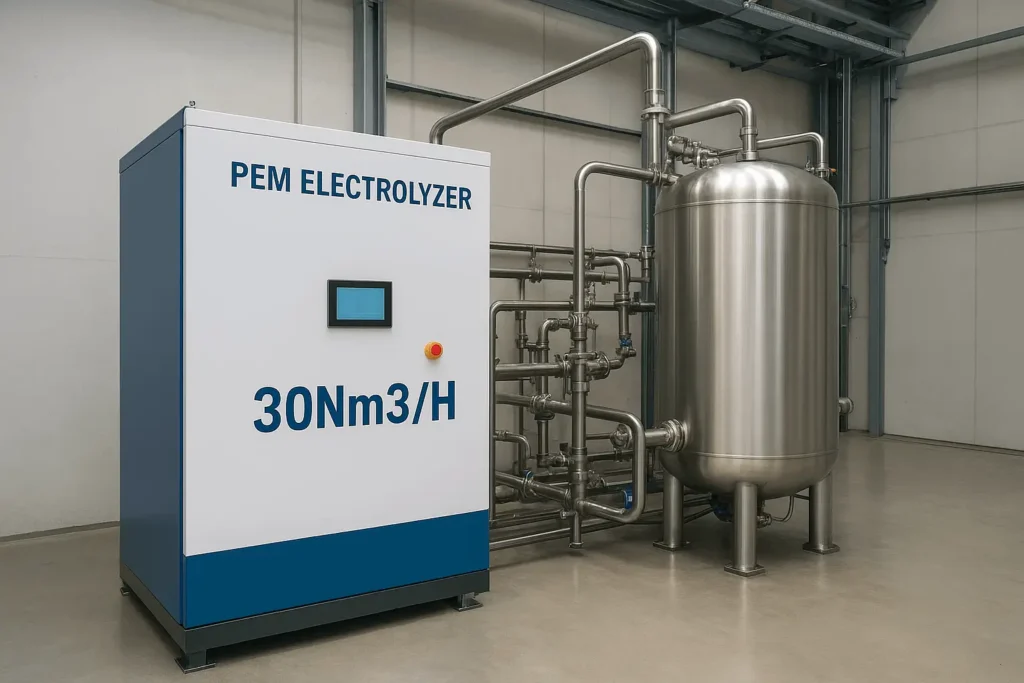
Key Selection Criteria for a 30Nm3/H PEM Electrolyzer
Choosing the right 30Nm3/H hydrogen generator for sale is not just about matching capacity. It’s about aligning performance, efficiency, and safety with your operational demands. Below are the essential factors to consider.
Hydrogen Purity
Hydrogen purity is critical for many industries.
- Electronics & Semiconductor Manufacturing: Requires ultra-high purity (up to 99.999%) to prevent contamination.
- Fuel Cells: Sensitive to impurities that can poison catalysts.
- Chemical Production: Even minor contaminants can affect reaction yields.
How PEM Electrolyzers Deliver Purity: PEM systems inherently produce high-purity hydrogen because the proton exchange membrane acts as a molecular filter. In most cases, no post-purification is needed.
For ultra-critical uses, additional purification via palladium membranes or pressure swing adsorption (PSA) may be added.
Efficiency and Energy Consumption
Electricity is the largest operating cost for hydrogen production. Efficiency is expressed as the amount of electricity needed per kilogram of hydrogen.
- High-Efficiency Systems: Use ~50–55 kWh per kg of hydrogen.
- Lower-Efficiency Systems: May use >60 kWh/kg, increasing OPEX.
Factors that affect efficiency:
- Operating Temperature: PEM operates at ~50–80°C, which is energy favorable.
- Current Density: Higher densities increase production but can reduce efficiency if pushed too far.
- Stack Quality: Membrane thickness, catalyst loading, and plate design influence losses.
Pro Tip: Always compare the total system efficiency, not just the stack efficiency.
Durability and Lifespan
PEM electrolyzers have consumable components, particularly the stack.
- Stack Lifespan: Often rated for 50,000–80,000 operating hours.
- Maintenance Needs: Minimal, but periodic inspections and gasket changes are recommended.
- Material Quality: Titanium flow plates, PTFE seals, and high-grade catalysts extend life.
Scalability and Modularity
Hydrogen demand may grow, so consider:
- Modular Designs: Allow adding more stacks without replacing the entire system.
- Containerized Solutions: Pre-built in shipping containers for easy expansion.
- Load Flexibility: The ability to run at partial loads without efficiency loss.
Safety Features
Hydrogen is highly flammable, so robust safety design is non-negotiable. Look for:
- Gas Leak Detection Sensors – For immediate alerts.
- Overpressure Protection – Automatic venting if pressure exceeds safe limits.
- Automatic Shutdown Systems – Prevent accidents during anomalies.
- Isolation Valves & Purge Systems – For safe maintenance operations.
Supplier Reputation and Support
The market for hydrogen generators is growing fast, but not all suppliers have proven track records. Checklist for vetting suppliers:
- Years in PEM electrolyzer manufacturing.
- References from existing industrial clients.
- Availability of spare parts in your region.
- On-site installation and commissioning services.
- 24/7 technical support options.
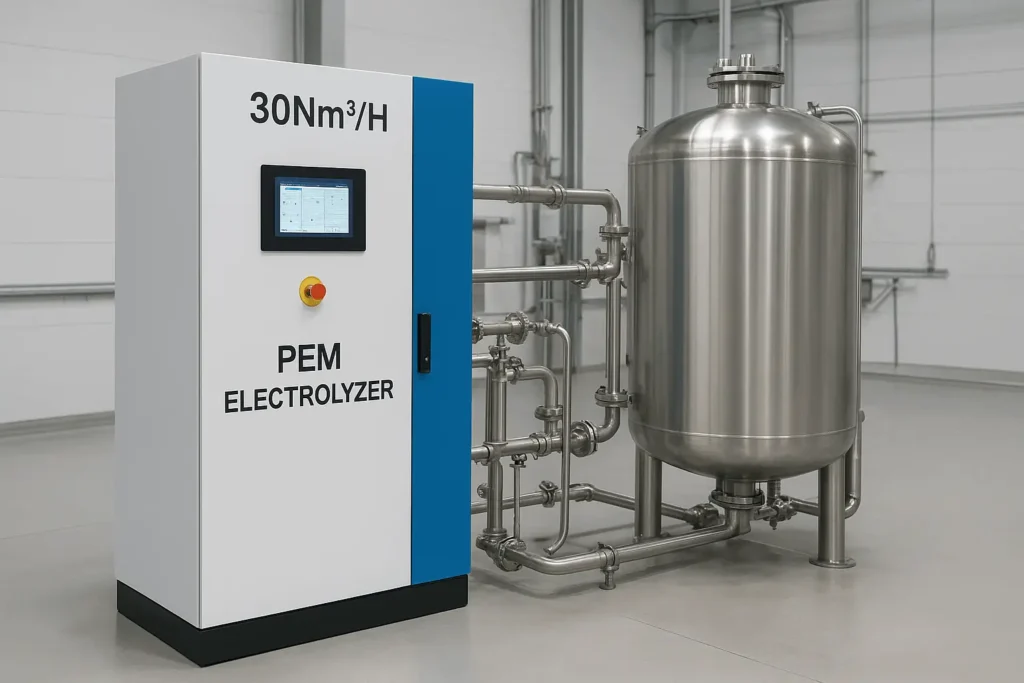
Cost Analysis
When evaluating cost, consider:
- Initial Capital Expenditure (CAPEX): Purchase price, installation costs, commissioning.
- Operating Expenditure (OPEX): Electricity, water purification, occasional stack replacement.
- Total Cost of Ownership (TCO): CAPEX + OPEX over 10–15 years, factoring in downtime losses.
For example, a higher-efficiency unit may cost more upfront but save significantly on electricity over its lifetime.
Alright — let’s keep the momentum going and move straight into the Installation Process section.
Installation Process
Installing a 30Nm3/H water PEM hydrogen generator is a critical phase where planning, engineering, and safety must come together. A well-executed installation ensures not only peak performance but also compliance with regulatory and safety standards.
Site Preparation
Before any equipment arrives, a thorough site assessment is necessary.
Key requirements include:
- Space Allocation: A 30Nm3/H PEM electrolyzer can be compact, but allow extra room for water purification units, gas handling equipment, and future expansion. A minimum of 15–25 m² is common for containerized systems.
- Ventilation: Hydrogen is odorless and lighter than air, so ventilation is critical to prevent accumulation. Install exhaust fans and open-air vents in enclosed spaces.
- Utility Access:
- Electrical Supply: Ensure adequate power availability (often 380–480V, 3-phase, industrial-grade supply).
- Water Supply: Must provide purified or pre-treated water for the electrolyzer.
- Drainage: For maintenance and water discharge.
Regulatory Compliance: Consult local building codes and hazardous gas regulations early in the process. This may involve zoning permissions, environmental permits, and pressure vessel certifications.
System Setup
Once the site is ready, equipment delivery and assembly can begin.
Typical steps:
- Unpacking and Inspection: Verify that all components arrive intact and match the order specification.
- Positioning Equipment:
- Electrolyzer stack and balance-of-plant units are placed in their designated locations.
- Maintain clearance for airflow and maintenance access.
- Electrical Connections:
- Connect to the main power supply via certified industrial electricians.
- Integrate safety disconnect switches and grounding systems.
- Water Connection:
- Connect water inlet to the purification unit.
- Ensure all fittings are leak-tested before operation.
- Gas Handling Integration:
- Hydrogen output is connected to storage tanks or pipelines.
- Install non-return valves, pressure regulators, and vent stacks for safety.
- Control System Integration:
- Connect monitoring sensors and automated shutdown systems to the central PLC (Programmable Logic Controller).
Commissioning
The commissioning phase ensures the system operates safely and according to design specifications.
Typical commissioning steps:
- Initial System Checks: Inspect all mechanical and electrical connections, verify sensor calibration.
- First Power-Up: Gradually ramp up to operating voltage and current while monitoring performance metrics.
- Purity Testing: Use hydrogen analyzers to confirm purity meets required standards (typically 99.999% for PEM).
- Flow Rate Verification: Confirm that the unit delivers the expected 30Nm3/H capacity under normal operating conditions.
- Safety Simulation: Test gas leak detection, emergency shutdowns, and overpressure relief systems.
- Operator Training: Provide on-site training for operational staff covering daily operation, routine maintenance, and emergency procedures.
Once commissioning is complete, the hydrogen generator is ready for continuous operation.
Got it — let’s go right into the Maintenance Tips section to keep the article flowing.
Maintenance Tips
Proper maintenance is key to ensuring your 30Nm3/H PEM hydrogen generator operates reliably, safely, and efficiently for years. While PEM electrolyzers have fewer moving parts than many industrial systems, they still require consistent care.
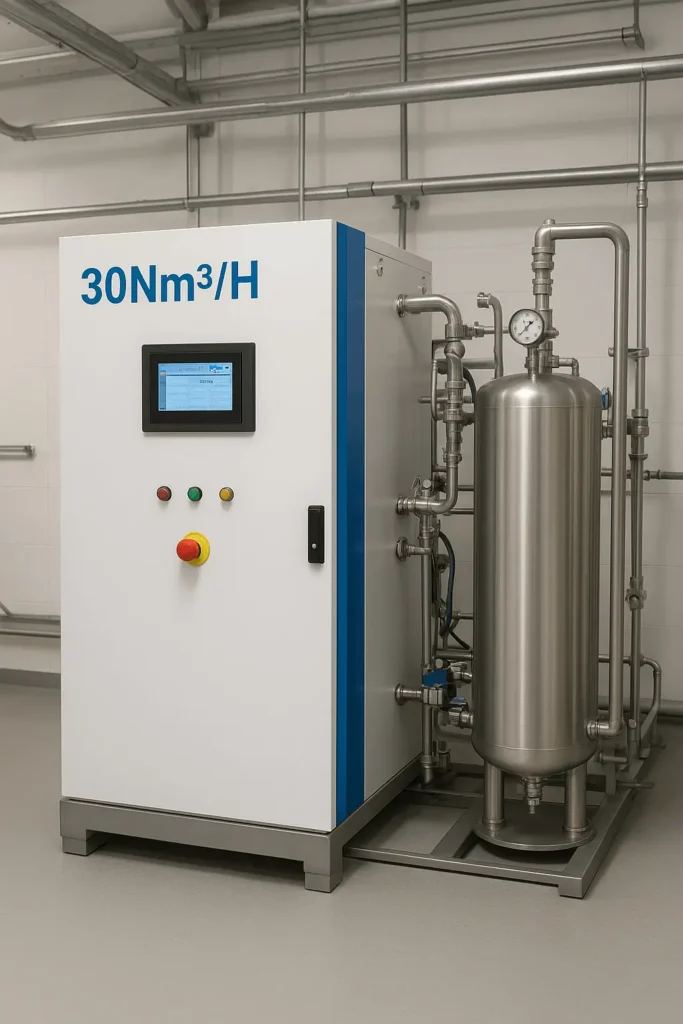
Regular Inspections
Frequency: Monthly or quarterly, depending on operating hours.
Checklist:
- Inspect all visible piping and joints for leaks.
- Check for corrosion on metallic surfaces, especially near fittings.
- Ensure ventilation systems are functioning and unobstructed.
- Verify that the control panel shows no fault codes.
- Review data logs for abnormal fluctuations in hydrogen output or purity.
Water Quality Management
Water purity directly impacts membrane longevity and efficiency.
Best practices:
- Use deionized (DI) or reverse osmosis (RO) treated water with <1 μS/cm conductivity.
- Replace water filters as recommended by the manufacturer (often every 6–12 months).
- Test water regularly to confirm quality remains within specifications.
Warning: Impure water leads to membrane fouling, which can permanently reduce stack performance.
Electrolyte Management
While PEM electrolyzers don’t require added liquid electrolytes like alkaline units, they still need proper hydration.
- Membrane Humidification: Maintain optimal moisture levels to prevent membrane drying, which reduces conductivity.
- Follow OEM guidelines for humidity control systems.
- Check any internal water circulation components for blockages or leaks.
Preventive Maintenance
Scheduled preventive maintenance is far less costly than emergency repairs.
- Stack Health Checks: Many PEM systems have diagnostic software to estimate stack condition — use it regularly.
- Replace worn gaskets, O-rings, and seals before failure.
- Inspect and clean heat exchangers to maintain thermal stability.
- Follow manufacturer service intervals — often annually or after a set number of operating hours.
Troubleshooting
Common issues and solutions include:
- Reduced Hydrogen Output: Check for low water supply, blocked filters, or membrane wear.
- Fluctuating Purity Levels: Inspect gas drying units and verify that separation membranes are intact.
- Frequent Shutdowns: Review system logs for fault codes; often linked to power supply instability or safety sensor triggers.
When to Call Support: If issues persist after basic troubleshooting, contact the supplier’s technical team. Reputable vendors will have 24/7 support and remote diagnostics.
Pro Tip: Keeping detailed maintenance logs not only helps with troubleshooting but also supports warranty claims and compliance with safety regulations.
Perfect — let’s finish strong with the Conclusion and FAQs so your guide is fully complete and SEO-ready.
Conclusion
A 30Nm3/H water PEM hydrogen generator is an ideal solution for mid-scale industrial, energy, and research applications requiring reliable, high-purity hydrogen production. By investing in a quality system, you gain:
- Operational Independence – No reliance on external hydrogen deliveries.
- Consistent Purity – Suitable for sensitive applications like electronics and fuel cells.
- Scalability – Modular systems can grow with your needs.
- Environmental Benefits – Zero direct CO₂ emissions when powered by renewable electricity.
Choosing the right generator involves evaluating purity, efficiency, durability, safety, supplier reliability, and total cost of ownership. Following proper installation and a structured maintenance plan ensures optimal performance for years.
As global demand for clean hydrogen rises, PEM electrolyzers are set to play a leading role in the energy transition. Whether your goal is reducing carbon emissions, powering fuel cell fleets, or advancing research, a 30Nm3/H hydrogen generator for sale represents a forward-thinking, future-proof investment.
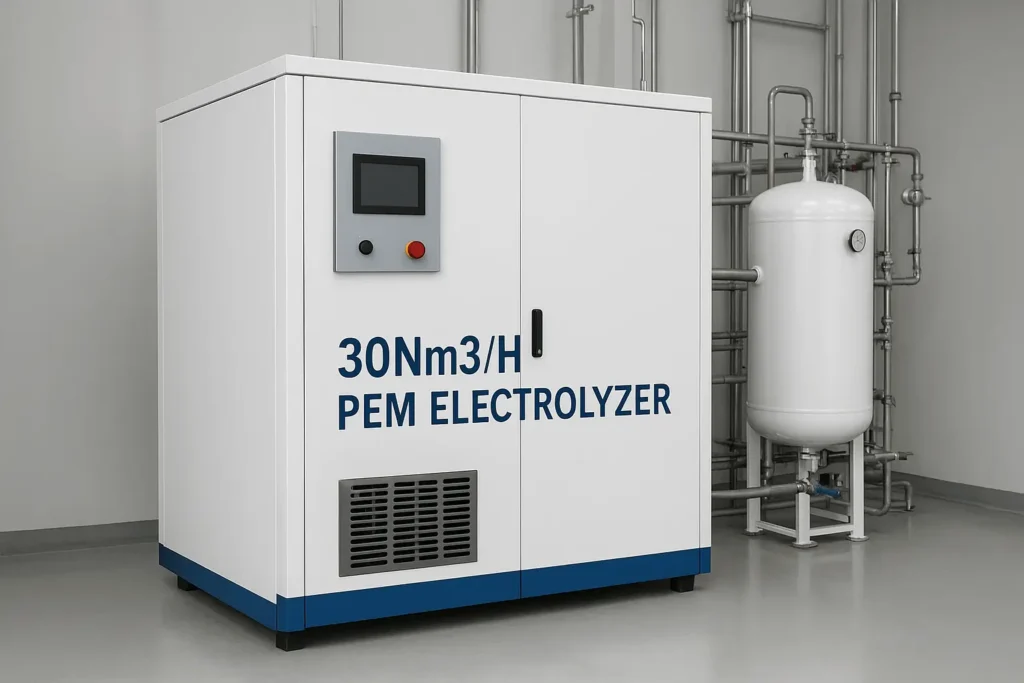
Frequently Asked Questions (FAQs)
1. What does 30Nm3/H mean in hydrogen production?
It refers to a hydrogen flow rate of 30 normal cubic meters per hour, equivalent to about 2.7 metric tons of hydrogen per month at continuous operation.
2. Why choose a PEM electrolyzer over an alkaline system?
PEM electrolyzers produce higher-purity hydrogen, have faster startup times, operate more efficiently at variable loads, and require less maintenance.
3. Can a 30Nm3/H PEM electrolyzer run on renewable energy?
Yes. In fact, PEM systems are ideal for pairing with solar or wind power due to their ability to ramp output up or down quickly.
4. How much electricity does a 30Nm3/H generator consume?
Depending on efficiency, it may consume around 50–55 kWh per kilogram of hydrogen produced, totaling roughly 1.5–1.7 MWh per day at full output.
5. What water quality is required?
Ultra-pure deionized water with conductivity under 1 μS/cm is recommended to prevent membrane damage and maintain efficiency.
6. How often does the electrolyzer stack need replacement?
Typically after 50,000–80,000 hours of operation, depending on usage patterns and maintenance quality.
7. Is it safe to install a hydrogen generator indoors?
Yes, but proper ventilation, gas leak detection, and adherence to local safety codes are mandatory.
Final Thoughts
The shift toward hydrogen-powered industries is accelerating, and the technology behind PEM electrolyzers has matured to a point where it offers unmatched performance and reliability. By selecting the right 30Nm3/H hydrogen generator for sale, you not only meet today’s operational needs but also position your business to thrive in a low-carbon future.
Ready to explore the possibilities of partnering with Hele Titanium Hydrogen?
- Browse our Products to see our range of PEM Water Hydrogen Generators.
- Learn more about our Services and how we can support your OEM & Manufacturing needs.
- Contact Us today to discuss your specific requirements.
- Explore our FAQ to get answers to common questions.
- Visit our Blog for the latest insights and updates on hydrogen technology.
Email Us: heletitaniumhydrogen@gmail.com
Phone/WhatsApp: 086-13857402537

